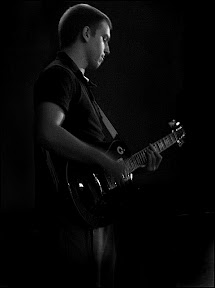Jewish Idioms: Secondary Burial
 The second idiom comes from Matthew, where a disciple asks Jesus to let him first go and bury his father before following Jesus.
The second idiom comes from Matthew, where a disciple asks Jesus to let him first go and bury his father before following Jesus.
“18When Jesus saw the crowd around him, he gave orders to cross to the other side of the lake. 19Then a teacher of the law came to him and said, "Teacher, I will follow you wherever you go." 20Jesus replied, "Foxes have holes and birds of the air have nests, but the Son of Man has no place to lay his head." 21Another disciple said to him, "Lord, first let me go and bury my father." 22But Jesus told him, "Follow me, and let the dead bury their own dead."(Matthew 8:18-22)
Jesus’ rebuke was not aimed at the disciples care for his father, but toward a Jewish tradition concerning burial which violated the Scripture.
This tradition required the body of the deceased to be placed in the ground on the day of his death (Deut 21:22-23, John 19:31, Acts 5:6-10). The family then observed a seven-day period of mourning called shivah, where they couldn’t even leave the house. After the body was placed in the burial chamber, it was left to decompose. The Jerusalem Talmud says, “When the flesh had wasted away, the bones were collected and placed in small chests called ossuaries. After the flesh had gone from the bones, and the bones were placed in the ossuaries, the son stopped mourning.”
This transfer of the bones to an ossuary was known as the secondary burial. It was done by the oldest son, who then took them to Jerusalem or to a family burial cave, where they were placed near the bones of their ancestors. This practice had become popular during the first century, but it had an unscriptural concept behind it that Jesus did not agree with.
There was a belief that the decomposition of the flesh between the first and second burials atoned for the sins of the dead person (Jerusalem Talmud). At the secondary burial, the son could rejoice because the sinful flesh was off the bones and the sins were atoned for.
Jesus wasn’t against the fact that the son had to show respect and honor to his father, Jesus was opposed to the secondary burial, which was motivated by an idea that something other than the Messiah could deliver a person from their sins.
More than likely, the first burial had taken place a year earlier, or the son would have been in mourning and not with Jesus. Some have suggested that this incident occurred just before the Feast of Tabernacles since Jesus and his followers were headed for Jerusalem. Since they were heading for Jerusalem the disciple probably thought this would be a good time to take his father’s ossuary there.








No comments:
Post a Comment